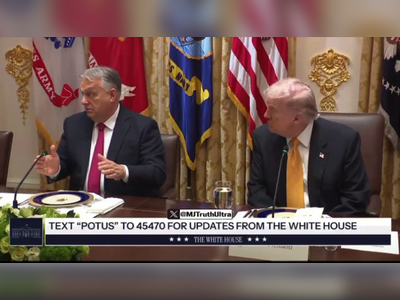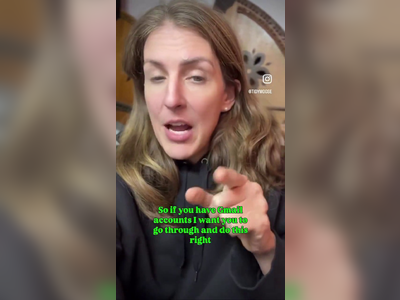
The Logic of Pandemic Restrictions Is Falling Apart
This is why you can eat in a restaurant but can’t have Thanksgiving.
Two weeks ago, I staged a reluctant intervention via Instagram direct message. The subject was a longtime friend, Josh, who had been sharing photos of himself and his fiancé occasionally dining indoors at restaurants since New York City, where we both live, had reopened them in late September. At first, I hadn’t said anything.
Preliminary research suggests that when people congregate indoors, an infected person is almost 20 times more likely to transmit the virus than if they were outside. But restaurants are open legally in New York, and I am not the COVID police. Josh and I had chatted several times in the early months of the pandemic about safety, and I felt sure that he was making an informed decision, even if it wasn’t the one I’d make.
As weeks passed, my confidence began to slip. The number of daily new cases in NYC started to balloon, heightening the risk of transmission in any closed space, but Josh kept going to restaurants. Maybe he was misunderstanding something about the risk. Maybe he’d want to know. The next time he posted about COVID-19, I told him, as gently as I could, that if he was trying to stay safe, it would be a good idea to stop dining indoors.
My suspicions were correct. Because the state and city had reopened restaurants, Josh, who asked to be identified only by his first name to protect his privacy, assumed that local health officials had figured out a patchwork of precautions that would make indoor dining safe.
He and his fiancé had even gone one extra step, making a Google Map of places they knew were being particularly strict with temperature checks. They were listening to the people they were told to listen to—New York Governor Andrew Cuomo recently released a book about how to control the pandemic—and following all the rules.
Josh was irritated, but not because of me. If indoor dining couldn’t be made safe, he wondered, why were people being encouraged to do it? Why were temperature checks being required if they actually weren’t useful? Why make rules that don’t keep people safe?
Across America, this type of honest confusion abounds. While a misinformation-gorged segment of the population rejects the expert consensus on virus safety outright, so many other people, like Josh, are trying to do everything right, but run afoul of science without realizing it. Often, safety protocols, of all things, are what’s misleading them.
In the country’s new devastating wave of infections, a perilous gap exists between the realities of transmission and the rules implemented to prevent it. “When health authorities present one rule after another without clear, science-based substantiation, their advice ends up seeming arbitrary and capricious,” the science journalist Roxanne Khamsi recently wrote in Wired.
“That erodes public trust and makes it harder to implement rules that do make sense.” Experts know what has to be done to keep people safe, but confusing policies and tangled messages from some of the country’s most celebrated local leaders are setting people up to die.
Since my conversation with Josh, the internal logic of New York’s coronavirus protocols has deteriorated further. As more and more New Yorkers have become sick, officials have urged people to skip Thanksgiving, because of the danger of eating indoors with people you don’t live with. Rather than closing indoor dining, however, Cuomo has ordered all restaurants and bars simply to close by 10 p.m.
This curfew also applies to gyms, which are not exactly hotbeds of late-night activity even in normal times. Meanwhile, case counts have risen enough to trigger the closure of New York City public schools, but businesses still have full discretion to require employees to come into work. (Cuomo’s office did not respond to a request for comment.)
It isn’t just New York; in states across the country, local officials have urged caution and fastidiousness. But those words can seem tenuously connected, at best, to the types of safety measures they’ve put in place. In Rhode Island, for example, residents are prohibited from gathering with even one person outside their household, even in the open air of a public park. But inside a restaurant? Well, 25 people is fine.
Hire a caterer? You’re legally cleared to have up to 75 outdoors. The governor’s executive order merely notes: “The lower attendance at such events, the lower the risk.” (The Rhode Island governor’s office did not respond to a request for comment.)
Before you can dig into how cities and states are handling their coronavirus response, you have to deal with the elephant in the hospital room: Almost all of this would be simpler if the Trump administration and its allies had, at any point since January, behaved responsibly. Early federal financial-aid programs could have been renewed and expanded as the pandemic worsened.
Centrally coordinated testing and contact-tracing strategies could have been implemented. Reliable, data-based federal guidelines for what kinds of local restrictions to implement and when could have been developed. The country could have had a national mask mandate. Donald Trump and his congressional allies could have governed instead of spending most of the year urging people to violate emergency orders and “liberate” their states from basic safety protocols.
But that’s not the country Americans live in. Responding to this national disaster has been left to governors, mayors, and city councils, basically since day one. “You’ve got a lot of problems if every state has to develop everything from scratch,” Tara Kirk Sell, a researcher at the Johns Hopkins Center for Health Security, told me. “First of all, it’s a lot of wasted time and money.”
Instead of centralizing the development of infrastructure and methods to deal with the pandemic, states with significantly different financial resources and political climates have all built their own information environments and have total freedom to interpret their data as they please.
In the worst-case scenarios, that interpretation has privileged politics over the health of the population. Vociferously Trump-allied governors in hard-hit states such as Georgia, Florida, and South Dakota have declined to so much as implement a public mask mandate while local caseloads have soared. Sometimes, they have sparred with municipal leaders trying to do more. In hard-hit El Paso, Texas, for example, a local stay-at-home order was recently overturned by a state court, even as local officials have had to call in refrigerated trucks to serve as makeshift morgues.
Even in cities and states that have had some success controlling the pandemic, a discrepancy between rules and reality has become its own kind of problem. When places including New York, California, and Massachusetts first faced surging outbreaks, they implemented stringent safety restrictions—shelter-in-place orders, mask mandates, indoor-dining and bar closures.
The strategy worked: Transmission decreased, and businesses reopened. But as people ventured out and cases began to rise again, many of those same local governments have warned residents of the need to hunker down and avoid holiday gatherings, yet haven’t reinstated the safety mandates that saved lives six months ago.
The pandemic is surging virtually everywhere in America; last week alone, it infected more than 1 million people and killed more than 8,000. And yet indoor dining largely remains open, even as leaders warn of the very real perils of Thanksgiving dinner.As time goes by, you’d think that local governments would get better at setting restrictions fine-tuned to protect people’s safety, not worse.
But beneath this contradiction lies a fundamental conflict that state and local leaders have been forced to navigate for the better part of a year. Amid the pandemic, the people they govern would generally be better served if they got to stay home, stay safe, and not worry about their bills. To govern, though, leaders also need to placate the other centers of power in American communities: local business associations, real-estate developers, and industry interest groups.
These groups, whose businesses have cratered, have been vocal about their desire to see people go back to their jobs and pay their rent on time and in full. Just as these kinds of groups have developed an outsize influence on how policies are made on a national level, they also have significant sway in state and local politics.The best way to resolve this conflict would probably be to bail out workers and business owners. But to do that at a state level, governors need cash on hand; currently, most of them don’t have much.
The federal government, which could help states in numerous ways, has done little to fill state coffers, and has let many of its most effective direct-aid programs expire without renewal. Those programs, such as expanded unemployment benefits and lump-sum relief checks, were so successful that they briefly prevented the poverty rate from rising at a time when more people than ever were suddenly out of work.
However effective these kinds of robust monetary programs may be at keeping people fed, housed, and safe, they are generally not in line with the larger project of the American political establishment, which favors bolstering “job creators” instead of directly helping those who might end up working those jobs. If you make people safe and comfortable at home, it might be harder to make them risk their lives for minimum wage at McDonald’s during a pandemic.
With people out of work and small businesses set up to fail en masse, America has landed on its current contradiction: Tell people it’s safe to return to bars and restaurants and spend money inside while following some often useless restrictions, but also tell them it’s unsafe to gather in their home, where nothing is for sale. It’s a woefully inadequate stimulus plan, funded by money extracted little by little from the pockets of people who are mostly just confused about what they’re being compelled to do.
Service workers—the people at highest risk of contracting the virus in restaurants, bars, and gyms—are rarely part of a union, which would make it easier for them to take collective action to protect themselves. If they were, their situations might be closer to that of teachers in some cities, whose unions have won them strict protections, including the cancellation of in-person classes once local caseloads rise past predetermined rates.
Transparency, Kirk Sell told me, would go a long way toward helping people evaluate new restrictions and the quality and intentions of their local leadership. “People aren’t sheep,” she said. “People act rationally with the facts that they have, but you have to provide an understanding of why these decisions are being made, and what kind of factors are being considered.”
With that in mind, I asked Kirk Sell the question that’s been bothering me since I broke the news to my friend about the ineffectiveness of temperature checks and indoor partitions. Why can’t a governor or mayor just be honest?
There’s no help coming from the Trump administration, the local coffers are bare, and as a result, concessions are being made to business owners who want workers in restaurants and employees in offices in order to white-knuckle it for as long as possible and with as many jobs intact as possible, even if hospitals start to fill up again. Saying so wouldn’t change the truth, but it would better equip people to evaluate their own safety in their daily life, and make better choices because of it.
Kirk Sell stopped me short. “Do you think it might be the end of their career, though?” she asked. “Probably.”
Preliminary research suggests that when people congregate indoors, an infected person is almost 20 times more likely to transmit the virus than if they were outside. But restaurants are open legally in New York, and I am not the COVID police. Josh and I had chatted several times in the early months of the pandemic about safety, and I felt sure that he was making an informed decision, even if it wasn’t the one I’d make.
As weeks passed, my confidence began to slip. The number of daily new cases in NYC started to balloon, heightening the risk of transmission in any closed space, but Josh kept going to restaurants. Maybe he was misunderstanding something about the risk. Maybe he’d want to know. The next time he posted about COVID-19, I told him, as gently as I could, that if he was trying to stay safe, it would be a good idea to stop dining indoors.
My suspicions were correct. Because the state and city had reopened restaurants, Josh, who asked to be identified only by his first name to protect his privacy, assumed that local health officials had figured out a patchwork of precautions that would make indoor dining safe.
He and his fiancé had even gone one extra step, making a Google Map of places they knew were being particularly strict with temperature checks. They were listening to the people they were told to listen to—New York Governor Andrew Cuomo recently released a book about how to control the pandemic—and following all the rules.
Josh was irritated, but not because of me. If indoor dining couldn’t be made safe, he wondered, why were people being encouraged to do it? Why were temperature checks being required if they actually weren’t useful? Why make rules that don’t keep people safe?
Across America, this type of honest confusion abounds. While a misinformation-gorged segment of the population rejects the expert consensus on virus safety outright, so many other people, like Josh, are trying to do everything right, but run afoul of science without realizing it. Often, safety protocols, of all things, are what’s misleading them.
In the country’s new devastating wave of infections, a perilous gap exists between the realities of transmission and the rules implemented to prevent it. “When health authorities present one rule after another without clear, science-based substantiation, their advice ends up seeming arbitrary and capricious,” the science journalist Roxanne Khamsi recently wrote in Wired.
“That erodes public trust and makes it harder to implement rules that do make sense.” Experts know what has to be done to keep people safe, but confusing policies and tangled messages from some of the country’s most celebrated local leaders are setting people up to die.
Since my conversation with Josh, the internal logic of New York’s coronavirus protocols has deteriorated further. As more and more New Yorkers have become sick, officials have urged people to skip Thanksgiving, because of the danger of eating indoors with people you don’t live with. Rather than closing indoor dining, however, Cuomo has ordered all restaurants and bars simply to close by 10 p.m.
This curfew also applies to gyms, which are not exactly hotbeds of late-night activity even in normal times. Meanwhile, case counts have risen enough to trigger the closure of New York City public schools, but businesses still have full discretion to require employees to come into work. (Cuomo’s office did not respond to a request for comment.)
It isn’t just New York; in states across the country, local officials have urged caution and fastidiousness. But those words can seem tenuously connected, at best, to the types of safety measures they’ve put in place. In Rhode Island, for example, residents are prohibited from gathering with even one person outside their household, even in the open air of a public park. But inside a restaurant? Well, 25 people is fine.
Hire a caterer? You’re legally cleared to have up to 75 outdoors. The governor’s executive order merely notes: “The lower attendance at such events, the lower the risk.” (The Rhode Island governor’s office did not respond to a request for comment.)
Before you can dig into how cities and states are handling their coronavirus response, you have to deal with the elephant in the hospital room: Almost all of this would be simpler if the Trump administration and its allies had, at any point since January, behaved responsibly. Early federal financial-aid programs could have been renewed and expanded as the pandemic worsened.
Centrally coordinated testing and contact-tracing strategies could have been implemented. Reliable, data-based federal guidelines for what kinds of local restrictions to implement and when could have been developed. The country could have had a national mask mandate. Donald Trump and his congressional allies could have governed instead of spending most of the year urging people to violate emergency orders and “liberate” their states from basic safety protocols.
But that’s not the country Americans live in. Responding to this national disaster has been left to governors, mayors, and city councils, basically since day one. “You’ve got a lot of problems if every state has to develop everything from scratch,” Tara Kirk Sell, a researcher at the Johns Hopkins Center for Health Security, told me. “First of all, it’s a lot of wasted time and money.”
Instead of centralizing the development of infrastructure and methods to deal with the pandemic, states with significantly different financial resources and political climates have all built their own information environments and have total freedom to interpret their data as they please.
In the worst-case scenarios, that interpretation has privileged politics over the health of the population. Vociferously Trump-allied governors in hard-hit states such as Georgia, Florida, and South Dakota have declined to so much as implement a public mask mandate while local caseloads have soared. Sometimes, they have sparred with municipal leaders trying to do more. In hard-hit El Paso, Texas, for example, a local stay-at-home order was recently overturned by a state court, even as local officials have had to call in refrigerated trucks to serve as makeshift morgues.
Even in cities and states that have had some success controlling the pandemic, a discrepancy between rules and reality has become its own kind of problem. When places including New York, California, and Massachusetts first faced surging outbreaks, they implemented stringent safety restrictions—shelter-in-place orders, mask mandates, indoor-dining and bar closures.
The strategy worked: Transmission decreased, and businesses reopened. But as people ventured out and cases began to rise again, many of those same local governments have warned residents of the need to hunker down and avoid holiday gatherings, yet haven’t reinstated the safety mandates that saved lives six months ago.
The pandemic is surging virtually everywhere in America; last week alone, it infected more than 1 million people and killed more than 8,000. And yet indoor dining largely remains open, even as leaders warn of the very real perils of Thanksgiving dinner.As time goes by, you’d think that local governments would get better at setting restrictions fine-tuned to protect people’s safety, not worse.
But beneath this contradiction lies a fundamental conflict that state and local leaders have been forced to navigate for the better part of a year. Amid the pandemic, the people they govern would generally be better served if they got to stay home, stay safe, and not worry about their bills. To govern, though, leaders also need to placate the other centers of power in American communities: local business associations, real-estate developers, and industry interest groups.
These groups, whose businesses have cratered, have been vocal about their desire to see people go back to their jobs and pay their rent on time and in full. Just as these kinds of groups have developed an outsize influence on how policies are made on a national level, they also have significant sway in state and local politics.The best way to resolve this conflict would probably be to bail out workers and business owners. But to do that at a state level, governors need cash on hand; currently, most of them don’t have much.
The federal government, which could help states in numerous ways, has done little to fill state coffers, and has let many of its most effective direct-aid programs expire without renewal. Those programs, such as expanded unemployment benefits and lump-sum relief checks, were so successful that they briefly prevented the poverty rate from rising at a time when more people than ever were suddenly out of work.
However effective these kinds of robust monetary programs may be at keeping people fed, housed, and safe, they are generally not in line with the larger project of the American political establishment, which favors bolstering “job creators” instead of directly helping those who might end up working those jobs. If you make people safe and comfortable at home, it might be harder to make them risk their lives for minimum wage at McDonald’s during a pandemic.
With people out of work and small businesses set up to fail en masse, America has landed on its current contradiction: Tell people it’s safe to return to bars and restaurants and spend money inside while following some often useless restrictions, but also tell them it’s unsafe to gather in their home, where nothing is for sale. It’s a woefully inadequate stimulus plan, funded by money extracted little by little from the pockets of people who are mostly just confused about what they’re being compelled to do.
Service workers—the people at highest risk of contracting the virus in restaurants, bars, and gyms—are rarely part of a union, which would make it easier for them to take collective action to protect themselves. If they were, their situations might be closer to that of teachers in some cities, whose unions have won them strict protections, including the cancellation of in-person classes once local caseloads rise past predetermined rates.
Transparency, Kirk Sell told me, would go a long way toward helping people evaluate new restrictions and the quality and intentions of their local leadership. “People aren’t sheep,” she said. “People act rationally with the facts that they have, but you have to provide an understanding of why these decisions are being made, and what kind of factors are being considered.”
With that in mind, I asked Kirk Sell the question that’s been bothering me since I broke the news to my friend about the ineffectiveness of temperature checks and indoor partitions. Why can’t a governor or mayor just be honest?
There’s no help coming from the Trump administration, the local coffers are bare, and as a result, concessions are being made to business owners who want workers in restaurants and employees in offices in order to white-knuckle it for as long as possible and with as many jobs intact as possible, even if hospitals start to fill up again. Saying so wouldn’t change the truth, but it would better equip people to evaluate their own safety in their daily life, and make better choices because of it.
Kirk Sell stopped me short. “Do you think it might be the end of their career, though?” she asked. “Probably.”
AI Disclaimer: An advanced artificial intelligence (AI) system generated the content of this page on its own. This innovative technology conducts extensive research from a variety of reliable sources, performs rigorous fact-checking and verification, cleans up and balances biased or manipulated content, and presents a minimal factual summary that is just enough yet essential for you to function as an informed and educated citizen. Please keep in mind, however, that this system is an evolving technology, and as a result, the article may contain accidental inaccuracies or errors. We urge you to help us improve our site by reporting any inaccuracies you find using the "Contact Us" link at the bottom of this page. Your helpful feedback helps us improve our system and deliver more precise content. When you find an article of interest here, please look for the full and extensive coverage of this topic in traditional news sources, as they are written by professional journalists that we try to support, not replace. We appreciate your understanding and assistance.









